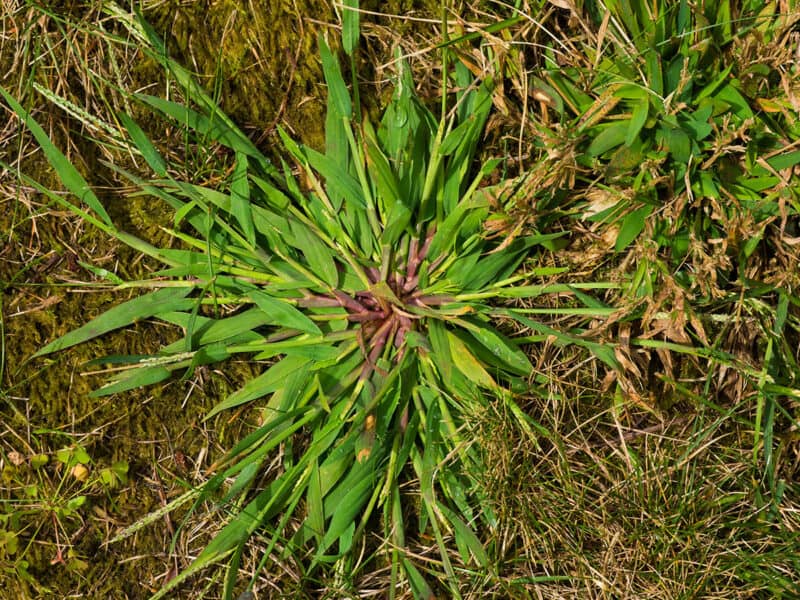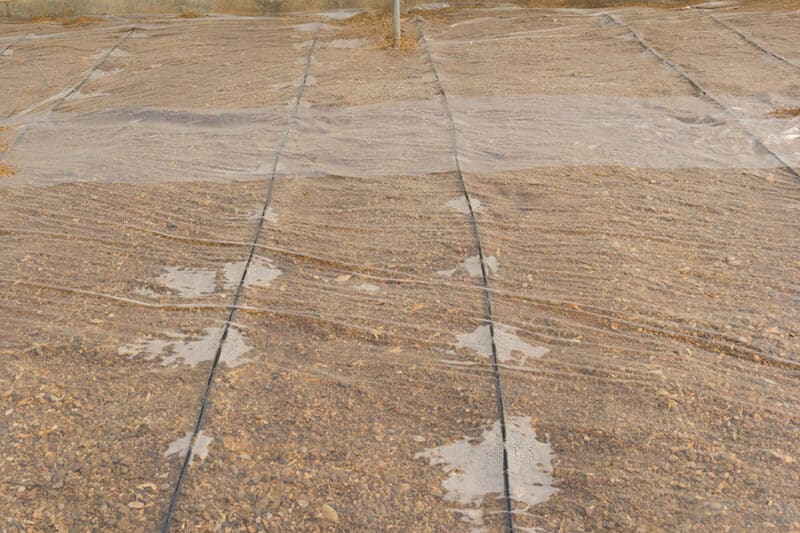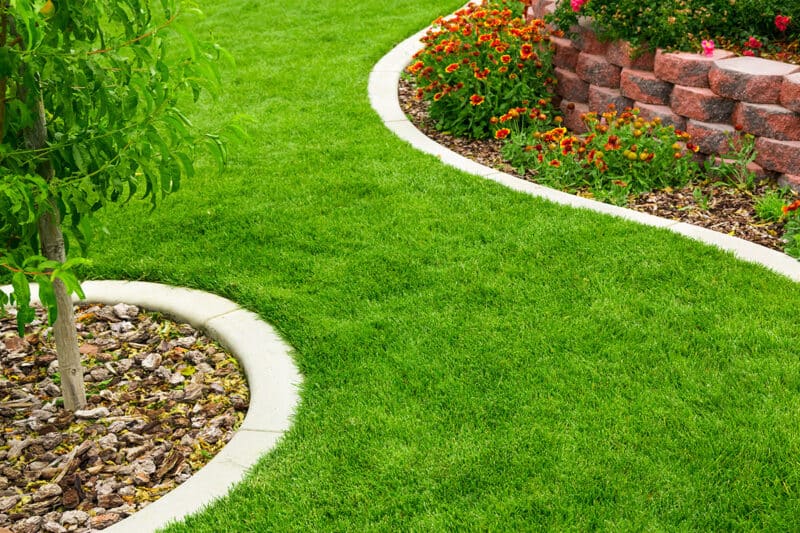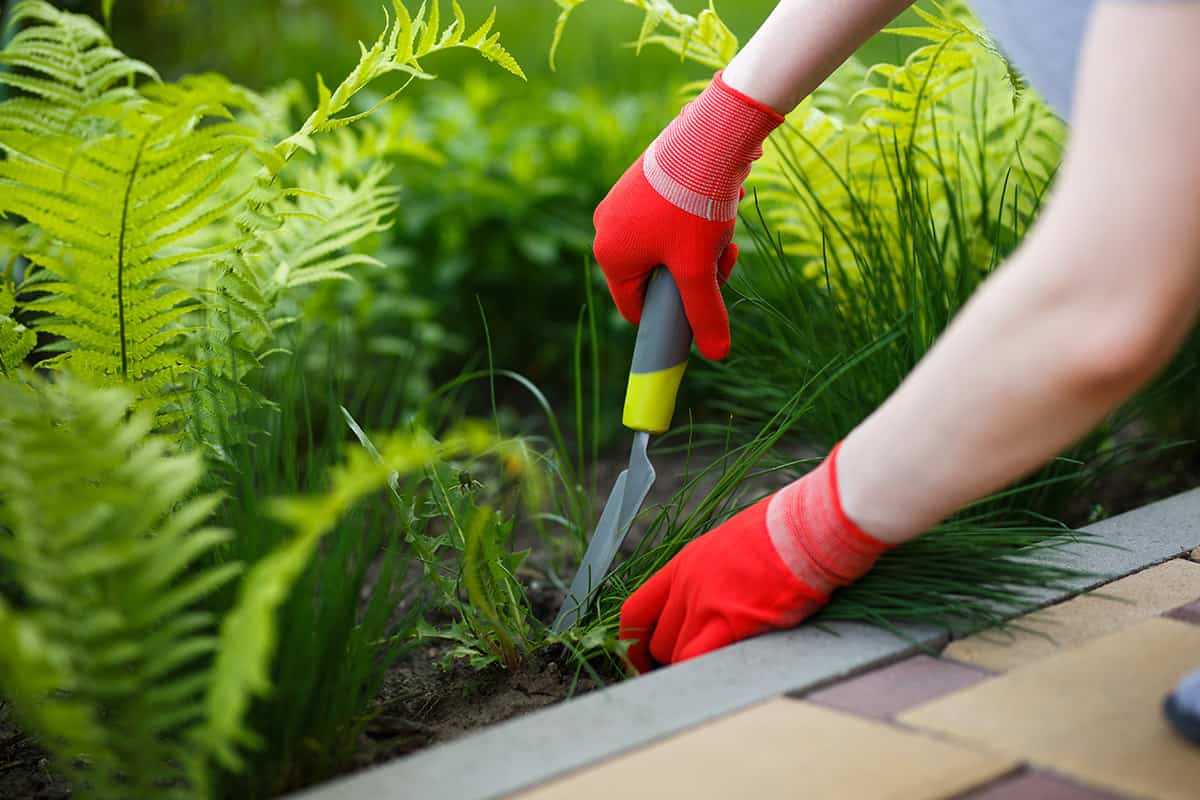I’m a meticulous gardener and I prefer a tidy garden bed, so I keep grass in its place.
This year, creeping grasses have been particularly rambunctious, and I’ve spent many hours killing keeping them out of my gardens. If you don’t keep on top of things, the grasses soon take over and steal your veggies’ nutrients.
There are various methods to kill grasses. I prefer the non-toxic ones, given that we are eating the produce grown in the same soil.
If you’re struggling with grass in your garden and finding it difficult to control, read on, because I know I can help you win the battle.
What Are Creeping Grasses?

Although these methods will work for any grass that finds its way into your gardens, creeping grasses are a little trickier to deal with. You’ll need some extra strategies to keep them under control.
Creeping grasses are those that spread underground through rhizomes. They can grow a long way underground before they reappear on your garden surface.
Think crabgrass and fescue.
These grasses basically have a long root that spreads underground and then pops up somewhere new by pushing through the soil at a new spot.
One reason they’re so prolific is that the root stores a lot of nutrients for the plant. If you pull the leaves above ground, the root has enough nutrition to send up new leaves.
Above ground, these same grasses also spread through stolons. These are roots that run along the ground or slightly under the surface. They’re often called runners and are usually thinner and tougher than rhizomes.
Unfortunately, once the creeping grass is in your garden, it’s a bit of work to remove it. It’s not just a normal weeding job because every stolon and root left behind can develop into a new plant.
Kill Creeping Grasses in Your Garden
If grass has already made its way into your garden, removing it can be hard because you don’t know where it has spread underground.
The Good Old Fashioned Digging Method
I find it best to do this chore at the end of the season when you have removed all the vegetables or flowers, and you’re preparing the garden for the next season of planting.
You can do this mid-season when the vegetables are still in the ground, but you’ll need to be careful not to damage your plants.
This is a reliable, tried-and-true method. It’s actually also one of the most effective ones, even though it’s the most laborious.
Go to each sprout of grass and dig as deep as possible. Remove all the surface grasses and every inch of rhizome you come across. You can do this in small sections or use a large shovel to turn over large sections of dirt and sift through it for roots and leaves.
If you are doing this when your garden is empty, it’s wise to combine the solarization method as well for a double-pronged attack.
Soil Solarization

You can do this method on its own or use it after you have used the digging method. We have an entire guide to help you do it, but here are the basics:
Cover your entire garden soil with clear plastic sheets. Weigh them down at the corners and edges with rocks or stakes. The heat of the sun will warm up and sterilize the soil.
Creeping grasses are robust, so solarization may take a few months to work. The digging and solarization methods combined are ideal to do when you’re resting your gardens.
Boiling Water
This method works for small areas but isn’t effective against seeds, underground parts, or large areas. Be careful not to burn yourself. Use a sealed container like the kettle you boil the water in to carry it.
Keep your hands and feet clear and pour the water on the exposed grass. This is especially good for grasses that are spreading through runners rather than rhizomes because you can’t soak the soil all the way to the buried rhizomes.
Pour liberally over the leaves and any runners you can see.
Layering
This method takes a long time, but it’s effective. It’s best done when you can rest the garden bed you’re treating. Cover the entire bed with cardboard and newspaper. Use multiple layers and wet down.
Then, cover with medium sized rocks to hold everything in place.
If you want to make the area look more attractive, you could cover the cardboard and newspaper with mulch. Use one you can dig into the soil when it’s time to replant the area.
Using this method takes about two months to rid your garden of creeping grass.
What Not to Use
Vinegar is touted as a popular home remedy for killing plants. It doesn’t work for grasses, however, and can have negative consequences. Similarly, salt isn’t effective for grass and can damage the soil.
You can use bleach to kill grass growing out of sidewalks and driveways, but not in the garden.
Stop Creeping Grass Getting into the Garden
Once grass has made its way into your garden, it’s difficult and time-consuming to remove. It’s also difficult to prevent from re-growing without using the digging method because rhizomes grow so fast.
The best way to stop this headache is to prevent the grasses from creeping in to begin with. Weeds and grasses will always get into your gardens, but there are things you can do to slow them considerably.
Create a Trench
Dig a trench about six inches wide and deep all around your garden. The theory behind this is that the rhizome will still try to grow toward your garden, but once it hits the air barrier created by the trench, it will dry out.
You need to maintain this trench to ensure grasses don’t grow over the edges and garden debris doesn’t fill it in.
Install Edging

Edging is an effective way to prevent creeping grass, but there are several points to consider.
You need to dig the edging into the soil so that it sits at least six inches below the surface. This slows the rhizomes down considerably and maybe completely.
You could use:
- Boulders or rocks
- Bricks
- Steel edging
- Old dinner plates
- Wood
- Cement
The other point to remember is no gaps between the edging pieces. Creeping grass has a habit of finding any gaps and sneaking through.
This method has a two-pronged approach. You slow down or block the rhizomes underground, and with the edging in place, you will see the runners as they pass over the top. Simply pull them out.
Keep Your Lawn Free of Weeds
Creeping grasses usually originate from your lawn. If you spend all your time reacting to them in the garden, they will continue to approach from the lawn.
There are many methods to rid the lawn of weeds, and a lot of people opt for chemical herbicides such as glyphosate.
This is a choice only you can make. I prefer not to use any chemicals so I use the boiling water method on weeds in my lawn.
This ends up creating patches where I have to reseed the grass, but it stops those creeping grasses from heading into my garden.
Maintenance and Design
Walk away from your garden for a week, and you’ll be amazed at how many weeds have made it their home, not to mention how many rhizomes and runners are at work.
Keep on top of weeding and creeping grasses. Although it is a constant chore, it saves the hard work of eliminating them later on when they become embedded in the garden.
If you are planning on putting in more gardens, add creeping grasses to your considerations. We all think about soil quality, sun, wind, and water, but think about weeds and grasses as well.
If you put in new gardens, consider barriers, pathways, and other spaces between the lawn and garden. Many of us just butt the garden edge to the lawn edge and hope for the best.
If you can prevent the creeping grasses from getting there in the first place, you will save yourself a lot of hard work later on.
Of course, you could always replace your lawn with a less aggressive (and edible!) alternative.
Depending on your garden design and methods to stop creeping grasses, you will always have maintenance to do to stop those grasses from getting into your garden. Keep an eye out and act early.
Prevention is better than reaction, so do all you can to stop or at least slow down their invasion.












